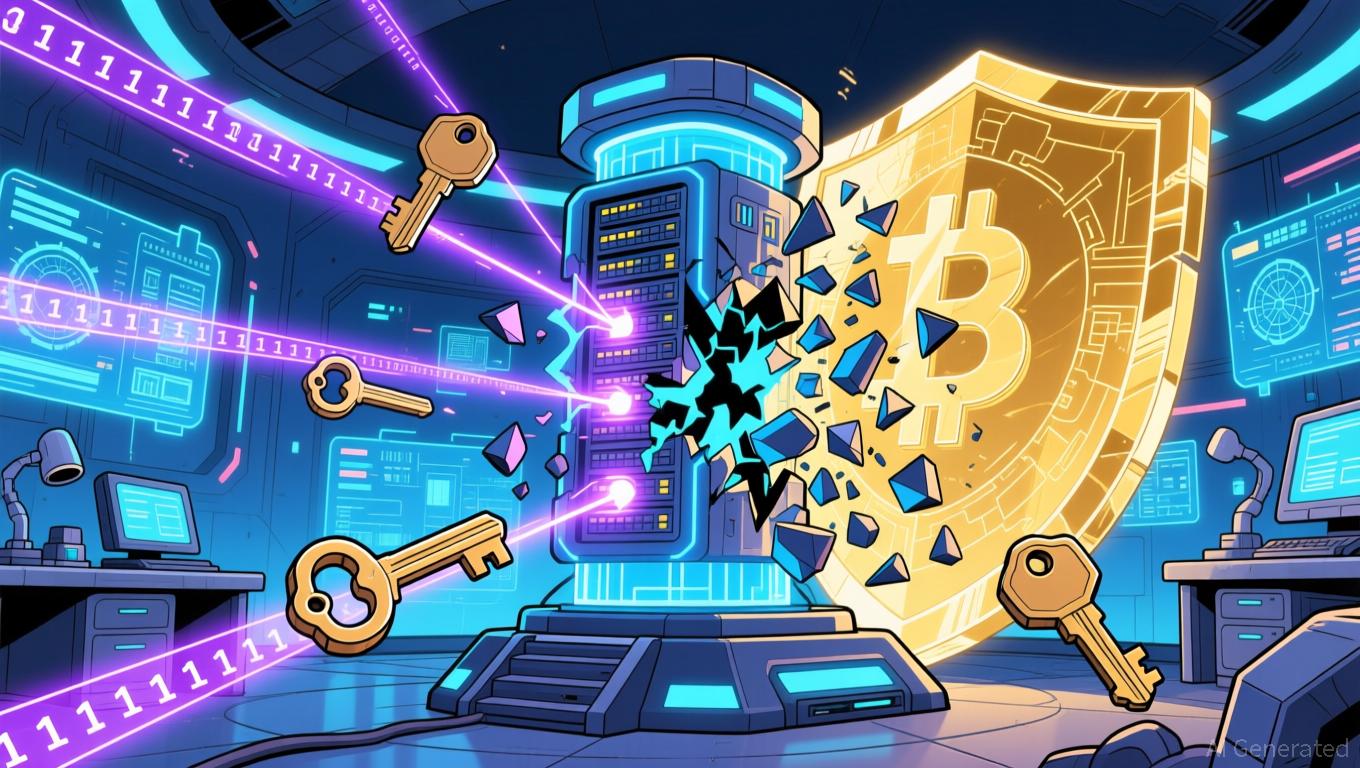The ICP Bull Run: Assessing the Role of Infrastructure in the Web3 Age
- ICP Network expands as a decentralized cloud leader via strategic alliances, AI-driven infrastructure, and institutional partnerships with Microsoft/Google Cloud. - TVL surged to $237B in Q3 2025, but DApp engagement fell 22.4%, highlighting reliance on speculative capital over organic user growth. - Industrial IoT innovations (PMC controllers, IoTstar platform) and on-chain AI execution position ICP as a hybrid blockchain-industry 4.0 solution leader. - Institutional adoption in healthcare/finance and d
Strategic Partnerships and Ecosystem Expansion
ICP’s projected expansion for 2025 is largely supported by its ICP Alliance, an initiative aimed at encouraging collaboration with partners in areas such as digital sovereignty, artificial intelligence, and multichain asset management
ICP’s momentum has been further boosted by institutional uptake. In November 2025, a strategic Memorandum of Understanding (MOU) between ICP DAS-BMP and companies such as Intype Enterprise and A-Max Technology showcased the network’s growing impact in sectors like medical-grade materials and smart manufacturing
Infrastructure Growth and Institutional Adoption
The ICP Network’s infrastructure experienced major enhancements in 2025, thanks to partnerships with cloud leaders like Microsoft Azure and Google Cloud
Despite this, there is a clear gap between TVL growth and DApp usage. While the increase in TVL points to strong institutional backing, DApp activity on ICP dropped by 22.4% during the same timeframe,
Developer Activity and Innovation Catalysts
ICP’s developer community remained robust in 2025, showing a 15% yearly increase in DeFi activity and heightened interest in its deflationary tokenomics
A major driver of innovation is ICP DAS’s progress in industrial IoT (IIoT), featuring the PMC series power controllers and the IoTstar cloud management platform, which support real-time monitoring of energy and environmental data
Decentralized Cloud Computing and Smart Contract Innovation
ICP’s technological strength is its capacity to execute AI models directly on-chain as secure, tamper-resistant smart contracts
The platform’s execution environment outperforms standard blockchains, offering hundreds of gigabytes of memory and processing speeds comparable to CPUs
Long-Term Investment Implications
From an investor’s viewpoint, ICP’s alignment with both institutional and technological trends makes it an appealing option for long-term investment. The network’s deflationary token structure, together with its increasing adoption in industries like healthcare and finance, points to a strong value proposition
Market outlooks are also optimistic. Historical data shows a 56% single-day price jump in late 2025, attributed to protocol enhancements like Caffeine AI and Chain Fusion interoperability
Risks and Considerations
Although ICP’s future appears bright, investors should exercise caution. The reduction in DApp usage and the emphasis on speculative TVL figures highlight the importance of increasing genuine user adoption. Additionally, regulatory uncertainties in the AI and blockchain arenas could present obstacles. Nevertheless, ICP’s dedication to privacy-focused cryptography and its institutional alliances help to offset some of these risks
Conclusion
The ICP Network’s strong performance in 2025 demonstrates its strategic role at the crossroads of decentralized cloud computing, AI advancement, and institutional engagement. Through the expansion of its ecosystem via the ICP Alliance, the development of industrial IoT solutions, and the introduction of on-chain AI, ICP has secured its place as a foundational infrastructure in the Web3 landscape. For investors, ICP’s deflationary model, institutional momentum, and technological edge present a promising long-term opportunity—provided it can maintain developer interest and successfully address regulatory challenges.
Disclaimer: The content of this article solely reflects the author's opinion and does not represent the platform in any capacity. This article is not intended to serve as a reference for making investment decisions.
You may also like
Buterin: Quantum Computing May Undermine Confidence in Crypto by 2028
- Ethereum co-founder Vitalik Buterin warns quantum computing could break Bitcoin/Ethereum's ECC security by 2028, enabling private key theft. - Quantum-resistant cryptography migration is urgent as tech giants advance 1000s-qubit systems, with ECC-breaking machines expected by 2030. - Industry faces dual challenges: developing post-quantum algorithms while maintaining blockchain functionality during complex decentralized upgrades. - Buterin urges accelerated global collaboration, highlighting that delayed

Pi Network's Journey: Evolving from a Community Movement to an International Travel Platform
- Pi Network launches Pitogo Testnet token, enabling travel bookings via decentralized platform to expand real-world utility. - Over 770,000 Pi coins migrated to mainnet in 24 hours, signaling readiness for broader applications ahead of v24.1.0 protocol upgrade. - MiCA-compliant whitepaper reveals EU market entry plans, positioning Pi as non-custodial layer-1 crypto aligned with global regulatory standards. - Ecosystem advances include Pi App Studio upgrades and Sesame Exchange airdrops, accelerating devel

Bitcoin News Update: Hayes Moves Crypto Holdings to Zcash, Anticipates Surge Fueled by Privacy
- Arthur Hayes transferred $2.5M in ETH/ENA to institutional market makers, sparking speculation about Zcash (ZEC) accumulation ahead of Bitcoin's 25% decline. - He advocates ZEC > XRP , forecasting $10k-$20k prices, while attributing BTC's slump to U.S. dollar liquidity contraction rather than macroeconomic shifts. - Market volatility pushed Fear & Greed Index to "extreme fear," yet Hayes predicts 2026 U.S. midterms-driven liquidity will reignite Bitcoin amid $500B global central bank injections. - Zcash'

Ethereum Updates Today: The Fall of Ethereum DAT Highlights the Vulnerability of Crypto's Institutional Aspirations
- Ethereum's $1B DAT project collapsed, refunding $200M amid crypto market volatility and regulatory uncertainty. - The initiative aimed to bridge traditional finance and crypto but reversed due to risk aversion and macroeconomic pressures. - Ethereum prices dipped below $3,100 while Bitcoin fell below $91,000, reflecting broader market turbulence and liquidity challenges. - Project creators may relaunch DAT if conditions stabilize, emphasizing risk management over short-term crypto ambitions.
